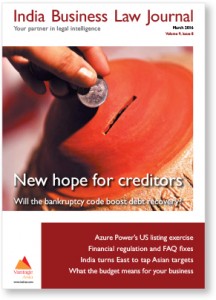Many will be unimpressed by the cacophony of voices that accompany the budget
But what of the halwa-making ritual that kicks off the process? This curious culinary exercise, which is presumably held deep in the bowels of India’s Finance Ministry, signals the start of a period of seclusion for officials involved in the printing of budget papers. It must surely have few parallels elsewhere.
The budget presented this year – 10 days after Finance Minister Arun Jaitley had taken part in the halwa-making – has been somewhat less impressive. While some are calling it a Robin Hood budget, others remark that it is more of the same. Yet there is plenty of respect for the enormity of the task at hand: creating a perfect blend of fiscal measures and policies that will power much-needed economic growth for India while also transforming people’s lives.

One area on which the budget provided little substance is the long-awaited goods and services tax. This is a key aspect of the government’s ongoing reform programme and all that the finance minister said was there was some way to go before it could be implemented.
This month’s Cover story focuses on another key aspect of the ongoing reform programme: the Insolvency and Bankruptcy Code, 2015 which is currently pending before parliament. Will this latest attempt at improving India’s abysmal debt recovery rates succeed where others have failed? The jury appears to be out on this despite some positives like a recalibration of power between debtors and creditors. Yet some like Rajinder Sharma, general counsel of Flipkart, see this as merely a new attempt to make creditors happy. Surely the gravity of the crisis over non-performing assets that is staring Indian banks in their faces and almost bringing them to their knees should prompt India’s lawmakers to think long and hard, and more importantly stop procrastinating, when passing such key laws.
Another area where greater introspection may be required is in finding ways to speed up processes and procedures in courts across India. Writing in this issue’s Vantage point Allison Stanfield, an expert in electronic evidence makes the case for paperless courts. Stanfield believes that it is only a matter of time before all documents are held in an electronic format even in Indian courts. The advantages are easy enough to see but what of the resources? Stanfield suggests that as lawyers and their clients push to be able to file and retrieve documents at every stage of proceedings, courts will make these capabilities available as their budgets allow. This may happen sooner rather than later as young lawyers increasingly expect documents to be downloadable, searchable, viewable and retrievable from their desktops or mobile devices.
One area where a possible lack of resources is not dampening interest is in the development of renewable energy. In this issue’s Whats the deal? we turn our focus to a proposed IPO and listing on the New York Stock Exchange by Azure Power, a solar power developer. The deal suggests there could be more action to come in India’s renewable energy sector. For while India has set itself the mammoth task of increasing its renewable energy capacity to 175 gigawatts (GW) by 2022, the target for solar capacity was raised to 100 GW from 20 GW. Given that solar capacity currently stands at approximately 5 GW this is an ambitious target. Facilitating such ambitions are lawyers in the US and India who are well versed in jumping all the required hoops.
In A view to the East we provide an in-depth report on legal and cultural challenges that come in the way of India’s desire to fortify trade ties with its Asian neighbours. The Indian government has displayed a renewed interest in strengthening India’s economic and political ties with countries in the region and has moved to turn its “Look East Policy” into an “Act East Policy”. This has resulted in large Indian conglomerates spreading their wings across the region, but there are still considerable risks. Lawyers in the region provide sensible tips. These include the need for detailed due diligence before entering the Thai market – as suggested by Ryan Crowley, at Dharmniti Law Offices in Bangkok; and the importance of keeping “comprehensive minutes when dealing with Chinese counterparties” and working out who is the “real decision maker” – valuable advice from Mark Schaub, a partner at King & Wood Mallesons in Shanghai, who says that Chinese companies usually have one big decision maker. Doing business in Indonesia will depend on getting to grips with the culture and habits of the ethnic group and community surrounding an investor’s business.
Some may say that lawyers are ill-equipped for the rigours of such work. But then so are the makers of India’s budgets who have perfected the fine art of making halwa.


























